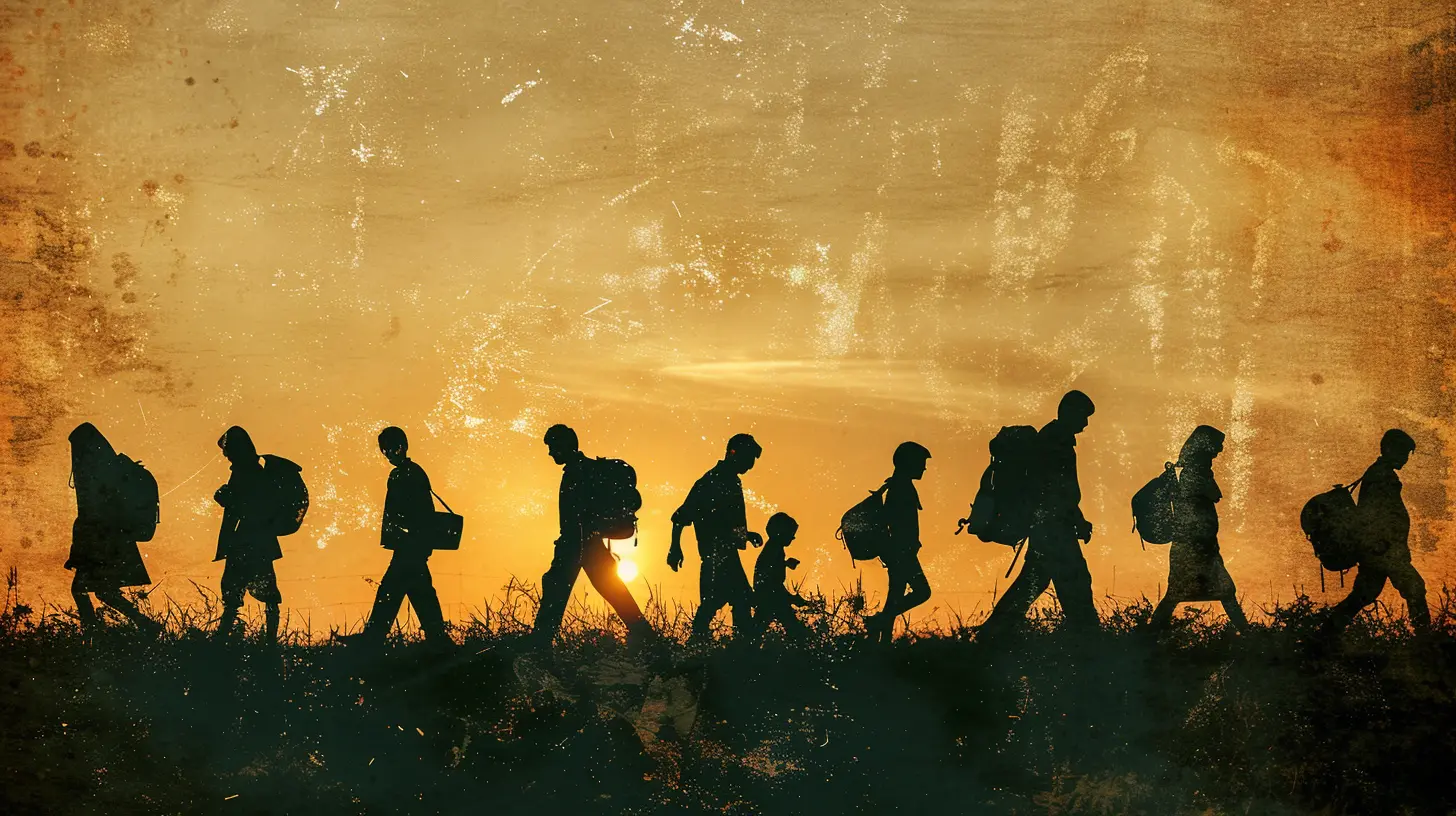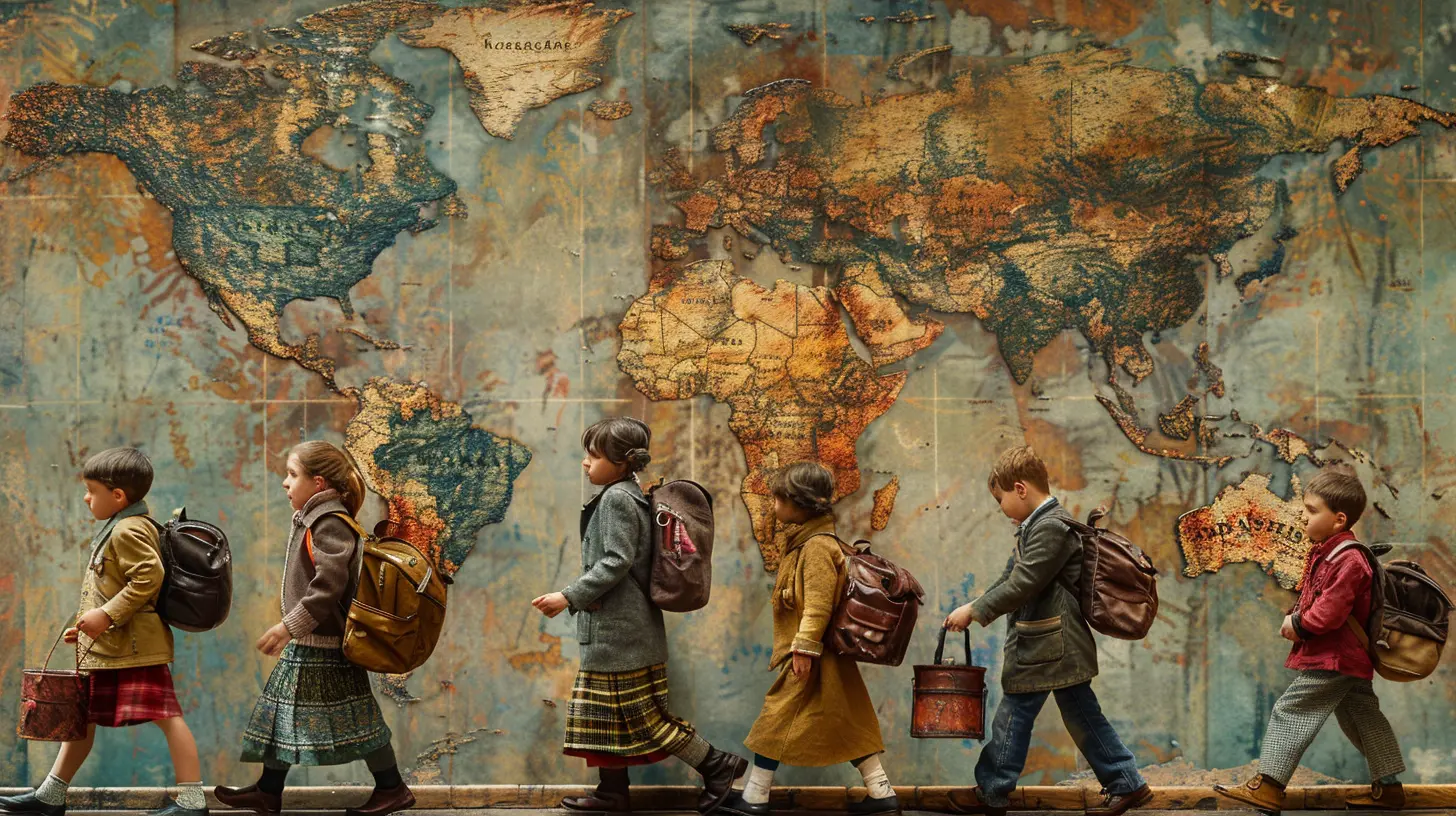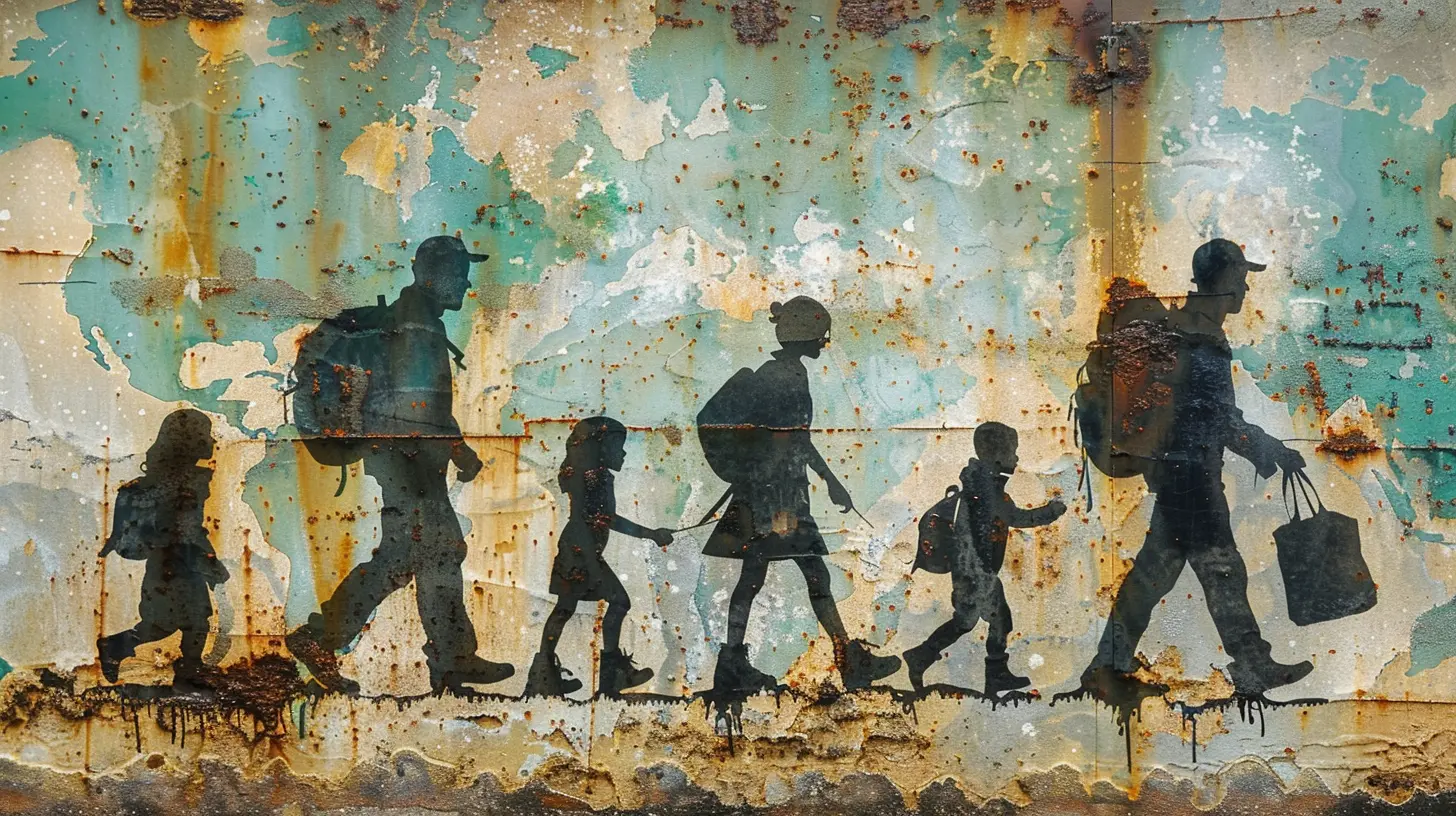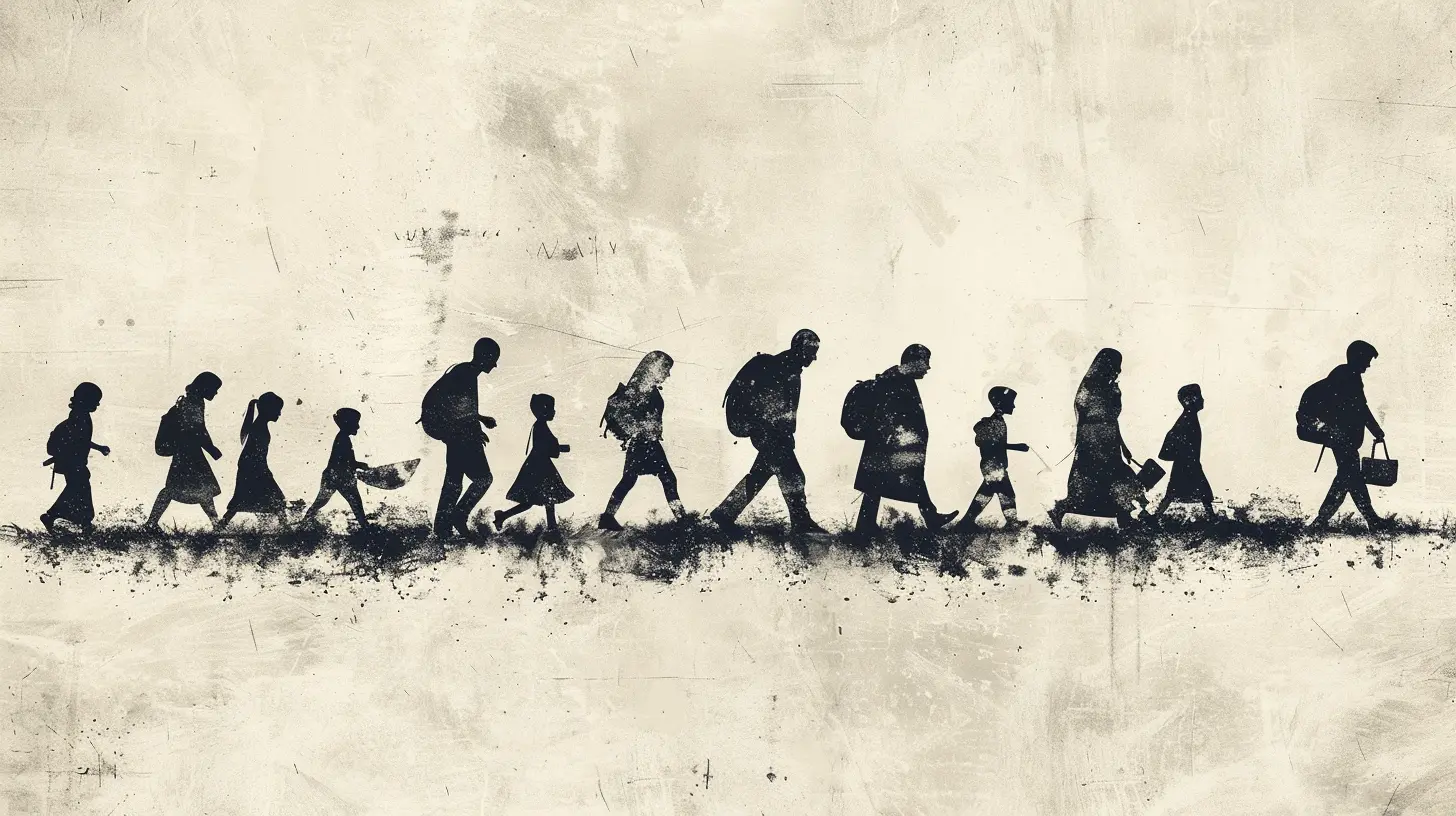29 November 2024
Migration is one of the most significant and recurring themes in human history. It’s essentially the story of people on the move, constantly seeking better opportunities, fleeing from dangers, or simply looking for a place to call home. Migration has shaped societies, cultures, and even the physical landscape of the planet. But have you ever wondered what drives people to migrate? Or how migration has impacted the world we live in today?
Let's dive into the fascinating topic of migration, exploring both its causes and its far-reaching effects throughout history.

What is Migration?
Before we get into the nitty-gritty, let’s clarify what migration actually means. Migration refers to the movement of people from one place to another, often crossing borders or even entire continents. This can happen for a variety of reasons—some voluntary, others forced.Migration can be internal (within a country) or international (across countries). Throughout history, migration has not only been an individual or family choice but also a mass movement, shaping the destinies of entire civilizations.
Types of Migration
To understand migration better, it’s essential to break it down into its various types:- Voluntary Migration: This occurs when people move by choice, usually in search of better living conditions, jobs, or education.
- Forced Migration: This happens when people are compelled to leave their homes due to conflict, persecution, or natural disasters.
- Seasonal Migration: Often linked to agriculture, where people move temporarily to work during specific seasons.
- Rural to Urban Migration: A common trend in many parts of the world where people move from the countryside to cities in search of better opportunities.
Now that we’ve got the basics covered, let’s explore why people migrate and how it has shaped human history.

Causes of Migration Through History
Migration can be triggered by a variety of factors. While some of these factors are ancient, others have emerged more recently. Here's a look at the primary causes of migration throughout history:1. Economic Opportunities
One of the most common reasons people migrate is to seek better economic opportunities. The lure of a better life, higher wages, and improved living conditions has been a driving force for centuries.Think of the Industrial Revolution in the 18th and 19th centuries. As factories and industries sprung up in urban centers, people from rural areas flooded into cities hoping to land jobs. Similarly, the promise of wealth and land led thousands to migrate to America during the 19th century, particularly during the California Gold Rush.
Even today, people migrate from developing countries to developed ones in search of better economic prospects.
2. Political Instability and Conflict
Wars, political unrest, and persecution have driven mass migrations throughout history. One of the most notable examples is the Great Migration of African Americans in the United States. Between 1916 and 1970, over six million African Americans left the rural South, where they faced racial segregation and limited economic opportunities, for cities in the North and West.On a global scale, wars such as World War II displaced millions, creating one of the largest forced migrations in history. The more recent conflicts in the Middle East have also resulted in massive refugee crises, with millions seeking asylum in Europe and other regions.
3. Environmental Factors
Natural disasters, droughts, and climate change have also been significant drivers of migration. The Dust Bowl, for instance, saw thousands of families from the American Midwest migrate to California during the 1930s due to severe dust storms and droughts that made farming nearly impossible.In more ancient times, entire civilizations were forced to relocate due to environmental changes. The collapse of the Maya civilization in Central America, for example, is partly attributed to prolonged droughts and environmental degradation, forcing people to move in search of more fertile lands.
Today, climate change and rising sea levels continue to displace populations, particularly in low-lying island nations.
4. Social and Cultural Factors
Social factors such as religious persecution, ethnic tensions, and the desire for a better quality of life have also led to migration. For example, the Pilgrims migrated to America in the early 17th century to escape religious persecution in England. Similarly, Jews have faced persecution in various parts of the world throughout history, leading to multiple waves of migration, most notably the Jewish Diaspora.In more recent years, the LGBTQ+ community has often migrated from conservative to more liberal regions in search of acceptance and safety.
5. Colonialism and Imperialism
Colonialism played a huge role in shaping global migration patterns. European powers such as Spain, Britain, and France colonized vast territories in Africa, Asia, and the Americas, resulting in the forced migration of millions of indigenous people.The Atlantic Slave Trade is another dark chapter in migration history, where millions of Africans were forcibly transported to the Americas to work as slaves. This not only changed the demographics of the Americas but also left lasting scars on the societies involved.
6. Technological Advancements
The development of transportation has significantly influenced migration. In ancient times, migration was often limited to walking distances or simple boats. However, innovations such as the steam engine, railways, and airplanes have made long-distance migration much easier and faster.For instance, the construction of the Transcontinental Railroad in the U.S. in the 19th century opened up the American West to settlers, leading to mass migration and the development of new towns and cities.

Effects of Migration Through History
Migration isn’t just about people moving; it has profound effects on the societies involved. Let's take a look at some of the major impacts:1. Cultural Exchange and Diversity
One of the most positive effects of migration is the rich cultural exchange that occurs when people from different backgrounds come together. Migration has been a key driver of cultural diffusion, where ideas, languages, food, and traditions spread from one region to another.For example, the Silk Road wasn’t just a trade route for goods; it also facilitated the exchange of ideas, religion, and culture between the East and West. Today, the multicultural fabric of countries like the U.S., Canada, and the U.K. is a direct result of centuries of migration.
2. Economic Growth and Development
Migrants often contribute significantly to the economies of their new homes. They bring skills, labor, and innovation, which can help stimulate economic growth. In fact, some of the world's most successful economies, like the United States, have been built on the contributions of immigrants.During the Industrial Revolution, for example, migrant labor was essential in building factories, railroads, and infrastructure. Today, many countries rely on migrant workers for sectors such as healthcare, agriculture, and construction.
3. Social Tensions and Conflict
While migration brings diversity, it can also lead to social tensions, particularly when there is competition for resources like jobs or housing. Throughout history, migrants have often been viewed with suspicion or hostility by local populations, leading to xenophobia and even violence.For instance, the arrival of Irish immigrants in the U.S. during the mid-19th century was met with fierce opposition, leading to the rise of anti-immigrant political movements like the Know-Nothing Party. Even today, immigration remains a polarizing issue in many countries.
4. Urbanization
Migration has been one of the main drivers of urbanization throughout history. As people move from rural areas to cities in search of jobs and better living conditions, cities grow and develop.The rise of major urban centers like New York, London, and Tokyo is directly linked to waves of migration. However, rapid urbanization can also lead to challenges such as overcrowding, pollution, and the strain on infrastructure.
5. Changes in Demographics
Migration can significantly alter the demographic makeup of a region. For example, the colonization of the Americas by Europeans led to dramatic changes in the population, including the displacement and decimation of indigenous peoples and the introduction of African slaves.In modern times, countries in Europe and North America have experienced demographic shifts due to immigration from Asia, Africa, and Latin America. This has implications for everything from politics to healthcare and education.
6. Political and Social Movements
Migration often sparks political and social movements, particularly when people fight for the rights of migrants or protest against restrictive immigration policies. The Civil Rights Movement in the U.S. was deeply influenced by the Great Migration of African Americans, and today, movements advocating for immigrant rights continue to shape political discourse.
Conclusion
Migration is a complex and multifaceted phenomenon that has shaped human history in countless ways. From the search for better economic opportunities to fleeing conflict and persecution, the reasons behind migration are as varied as the people who migrate. Migration has led to cultural exchange, economic growth, and urbanization but has also sparked social tensions and conflict.Understanding the causes and effects of migration can help us appreciate the global society we live in today. Migration is not just a historical trend; it's a continuing force that will shape our future as well.












Landon Hudson
Migration shapes cultures, identities, and global connections profoundly.
February 3, 2025 at 11:36 AM